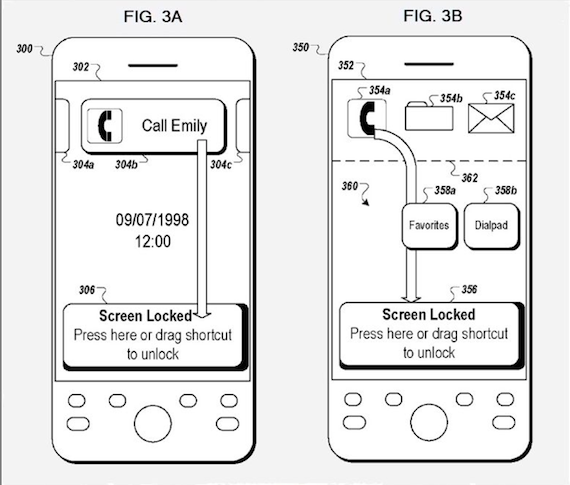In my other post I talked about the legal process surrounding Apples Slide to unlock patent and how the publication of Google's new patent may provide relief to their partners. In this post, I will talk specially about Google's patent itself.
Below are part of the actual blueprints for the patent that were submitted in 2010:

Interestingly, in many ways the patent seems a more useful tool for the end user.
How it works:
Phone locked
1) Press the icon you want to access e.g. email
2) Hold and drag it to the unlock bar (detailed above)
3) Phone is unlocked and the icon is automatically opened simultaneously e.g. your email instantly opens up for use
Phone unlocked
Arguably, more important than these features however, is the voice-recognition-to-unlock method that was also filed at the same time. This is something completely new and innovative to the mobile space, in terms of unlocking devices. Perhaps we will see a repeat performance of the apple slide-to-unlock legal fiasco, but with future legal suits ensuing over voice-recognition-to-unlock software.